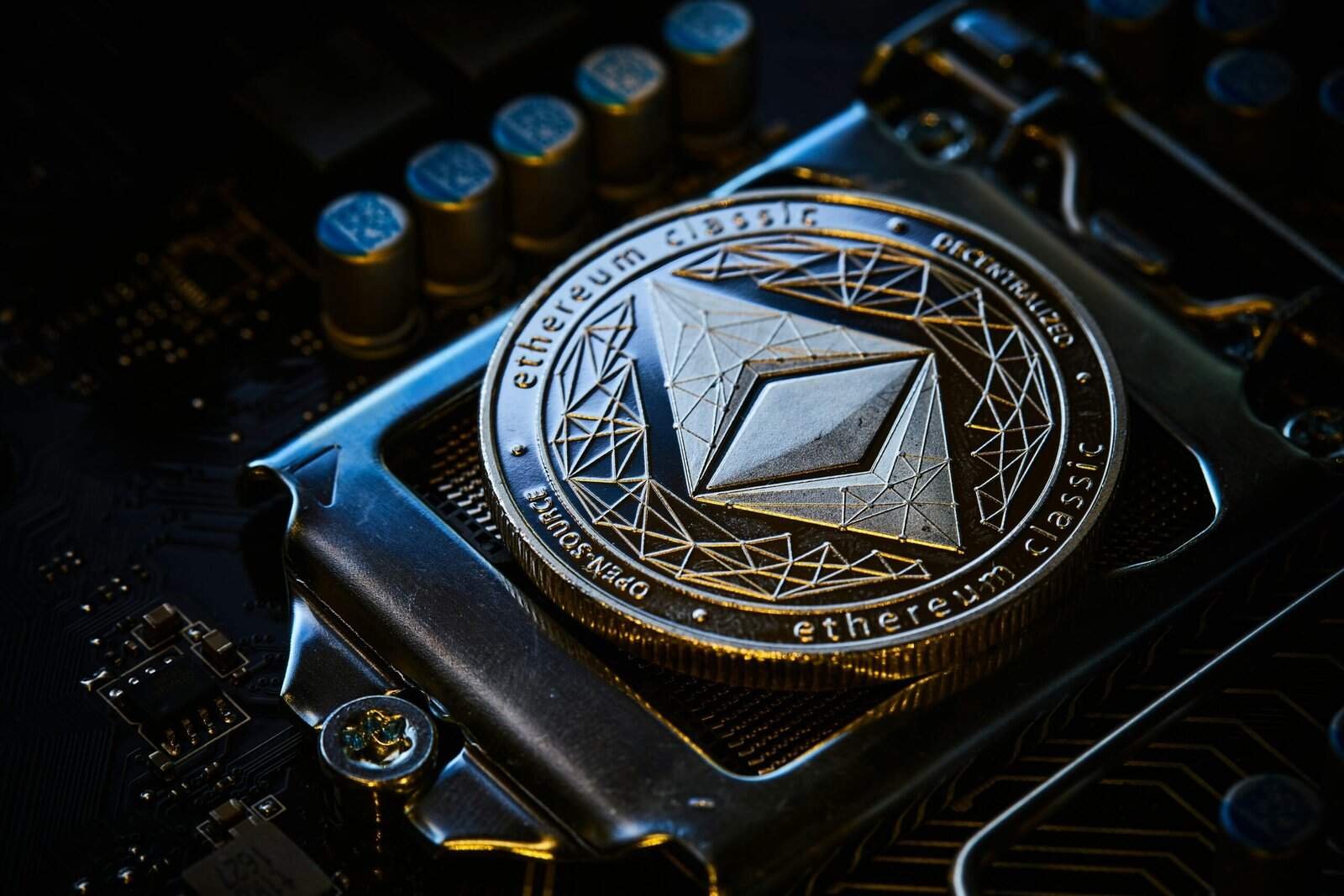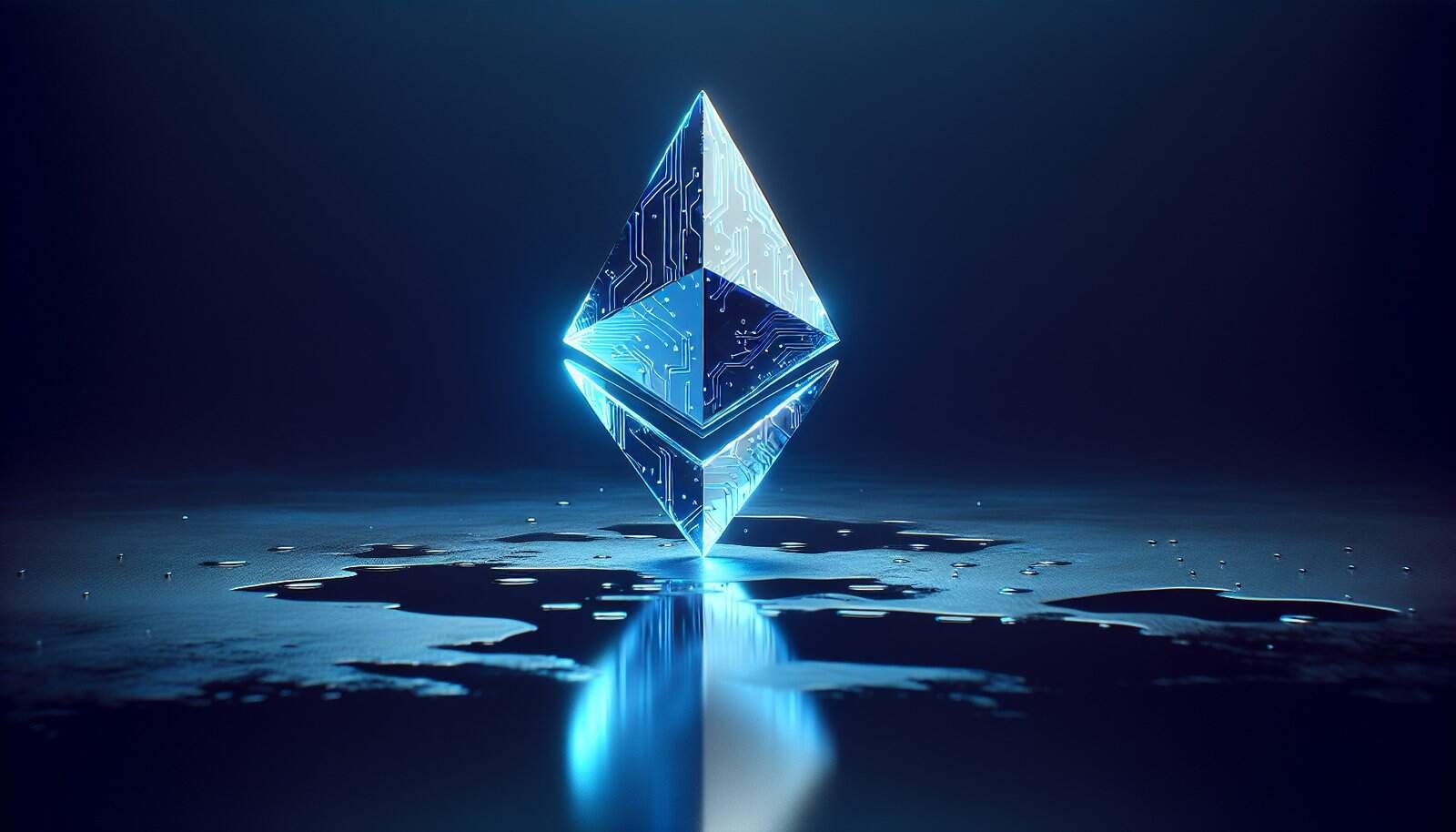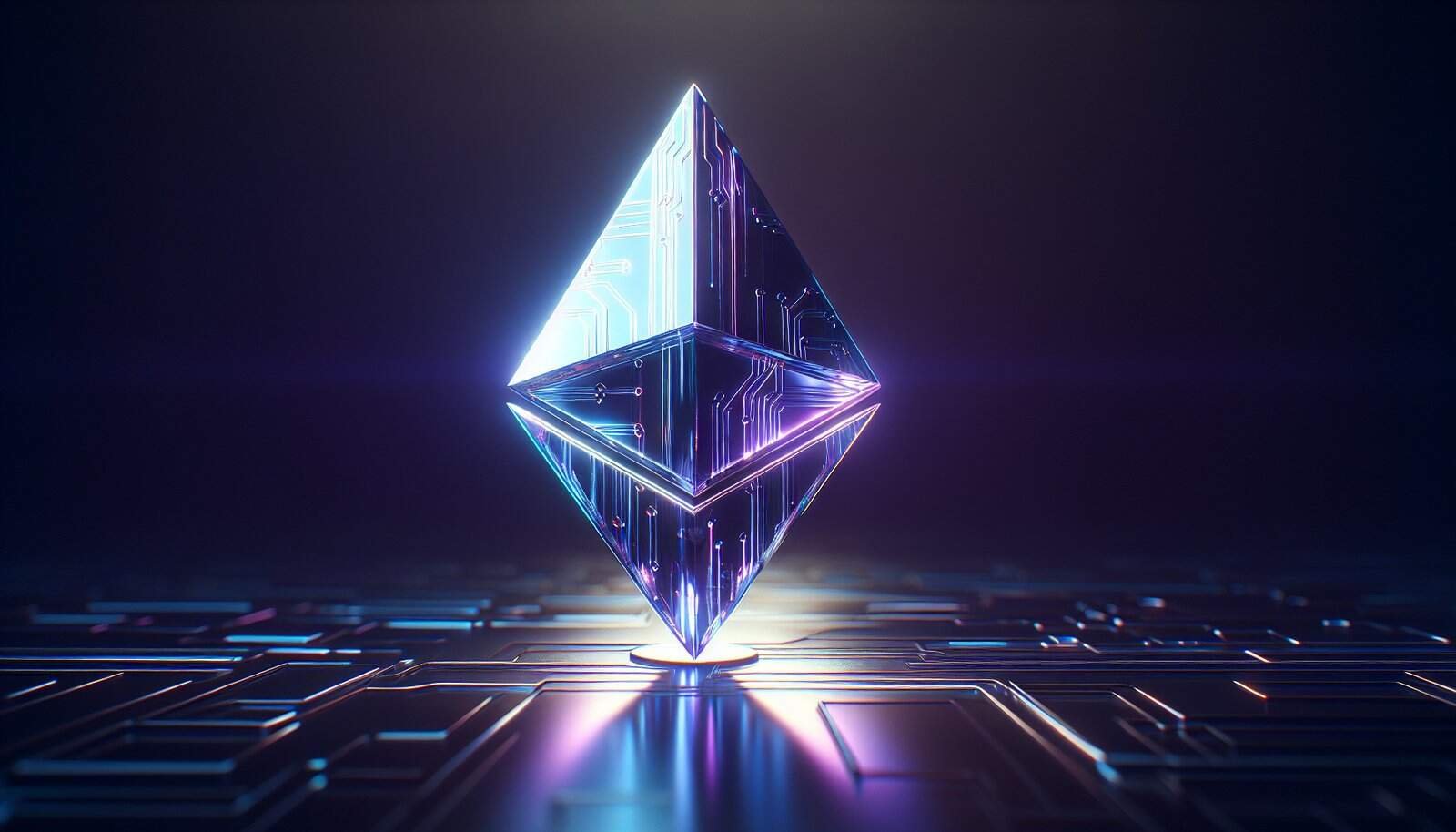?Are you wondering what role Ethereum still plays in 2025’s crypto landscape?

What Role Does Ethereum Still Play In 2025’s Crypto Landscape?
You’re asking a timely question: Ethereum has been central to crypto for years, but the ecosystem keeps changing fast. This section gives a high-level answer you can build on as you read the deeper analysis below.
In 2025, Ethereum remains one of the most influential blockchain platforms. You’ll find it acting as a settlement and smart-contract layer, a hub for decentralized finance (DeFi) and tokenization, and a backbone for many Layer 2 networks and cross-chain systems. That influence shows up in developer activity, liquidity concentration, institutional interest, and the architecture of many applications you use.
Ethereum’s Identity and Evolution Through 2025
You need context to understand Ethereum’s present role; it’s shaped by technical upgrades, market dynamics, and regulatory changes. This section summarizes the evolution that got Ethereum to 2025.
Ethereum’s transition from Proof-of-Work to Proof-of-Stake (The Merge) and subsequent upgrades shifted its cost, energy profile, and economics. Layer 2 scaling solutions, EVM-compatible chains, and broader token standards matured, creating a multi-layered ecosystem where Ethereum often acts as the canonical base layer for settlement, identity, and smart contract standards. The network’s developer tooling, institutional integrations, and regulatory attention continued to influence how projects choose to build and deploy.
Key Roles Ethereum Plays in 2025
You’ll want a clear list of functions Ethereum continues to serve. Below are the principal roles, each with a short explanation of why it matters.
1. Settlement Layer and Value Anchor
Ethereum still functions as a primary settlement layer for many assets and protocols. You’ll see high-value transactions and cross-chain finality anchored to Ethereum, especially where trust-minimization and decentralization are priorities.
As a settlement layer, Ethereum provides a common denominator of security and canonical history for many bridging and rollup mechanisms. When you’re moving assets between chains, you often rely on Ethereum’s finality to resolve disputes and ensure traceability.
2. Smart Contract Platform and Developer Ecosystem
You likely choose Ethereum or an EVM-compatible environment because of the extensive developer tools, libraries, and community. Solidity, robust SDKs, and a large pool of experienced developers keep Ethereum central to smart contract innovation.
Even if you build on alternative chains, the vast library of audited smart contracts, open-source tooling, and battle-tested frameworks often originate on Ethereum and are ported to other chains, keeping Ethereum’s patterns influential.
3. Hub for DeFi and Liquidity
DeFi remains a core use-case that drives activity and liquidity. You’ll find many leading decentralized exchanges, lending protocols, derivatives platforms, and stablecoins still anchored to Ethereum or its rollups.
Liquidity concentration matters: when liquidity pools, oracles, and collateral are largely on Ethereum, price discovery and market depth for many tokens occur there first. That affects slippage, arbitrage, and capital efficiency across chains.
4. Layer 2 Aggregation and Scalability Anchor
Layer 2 solutions (rollups, optimistic and zk, and various sidechains) use Ethereum as the trust root and settlement for state compression and dispute resolution. You’ll typically interact with L2s for cheap, fast transactions while relying on Ethereum for ultimate security.
This layered approach helps you combine low-cost UX with strong security guarantees; funds are often conserved under Ethereum’s security model even when transacted on L2s.
5. Tokenization and Standards Authority
ERC token standards, NFTs, and composable contracts remain a reference point. You’re likely to encounter the canonical versions of major token standards on Ethereum, shaping cross-chain interoperability and tooling.
When tokenizing real-world assets or launching a new token, many projects still prefer Ethereum-based standards for market recognition and compatibility.
6. Staking, Network Economics, and Security
As a PoS chain, Ethereum’s staking ecosystem has continued to influence how validators, liquid staking derivatives (LSDs), and security economics operate. You’ll see ETH used both as a security instrument and as a yield-bearing asset through staking mechanisms.
Network economics — including base fees, priority fees, and EIP-driven changes — remain important for you to understand as they affect transaction costs and market behavior.
7. Governance, Standards, and Institutional Adoption
Ethereum isn’t just code; it’s a governance and standards ecosystem. You’ll see Ethereum Improvement Proposals (EIPs), client diversity, and research teams shaping the protocol roadmap, which in turn shapes the broader market’s direction.
Institutions that need robust developer ecosystems, tooling, and compliance paths often target Ethereum-related infrastructure or EVM-compatible deployments for enterprise use.
How Ethereum Compares to Other Layer 1s in 2025
You’ll want to compare Ethereum to other Layer 1 platforms to know where it stands. The table below summarizes key dimensions you’ll care about when making decisions.
| Dimension | Ethereum (2025) | Other Layer 1s / Alternatives |
|---|---|---|
| Security model | Highly decentralized PoS with diverse clients; strong economic security | Varies: Some emphasize high throughput with fewer validators or different consensus tradeoffs |
| Developer tooling | Largest EVM tooling and library ecosystem; mature auditing and frameworks | Growing EVM ecosystems on other L1s, but native tooling often less mature |
| Liquidity & DeFi depth | High liquidity concentration; many flagship DeFi projects | Some L1s have niche liquidity, but less main-market depth |
| Transaction costs | Lower for L2 users; on-chain base costs influenced by network usage | Often lower nominal fees but may offer weaker settlement guarantees |
| Interoperability | Strong due to EVM standardization and major bridges | Varied; cross-chain bridges, but more fragmentation possible |
| Institutional presence | Strong due to infrastructure, custody services, and compliance efforts | Growing interest but often less institutional integration |
| Innovation pace | Active research community; careful, security-focused upgrades | Rapid iteration on some L1s, sometimes with risk tradeoffs |
This comparison helps you decide where to build or interact, balancing security, cost, and developer resources.

Layer 2s, Rollups, and Ethereum’s Scaling Strategy
You’ll see that scalability doesn’t mean replacing Ethereum; it often means complementing it. This section explains how L2s shape Ethereum’s role.
Layer 2 solutions handle bulk transactions off-chain and post succinct proofs or states back to Ethereum. You’ll benefit from faster, cheaper transactions while transaction finality and dispute resolution remain anchored to Ethereum. Rollups — optimistic and zk — have become mainstream, each with tradeoffs you should understand: optimistic rollups rely on fraud proofs and challenge windows, while zk-rollups use succinct cryptographic proofs that can offer faster finality at the cost of proving complexity.
The result for you: a multi-layered experience where Ethereum remains the ultimate settlement layer and arbiter of trust, while day-to-day interactions occur on L2s.
Economic and UX Implications for Users and Developers
You’ll experience the ecosystem differently now that L2s are widespread. This section explains practical effects on cost, speed, and composability.
- Cost: Transactions on L2s significantly reduce fees for you, but moving assets between L2s and the mainnet can still carry costs and delays, especially if you’re moving assets across different rollup types.
- Speed: L2s typically provide near-instant UX for transfers and interactions, improving consumer-grade applications.
- Composability: Cross-rollup composability is improving, but fragmentation can create UX friction. You’ll sometimes need bridges or intermediaries to access liquidity across rollups.
- Security tradeoffs: While L2s inherit Ethereum’s security to varying degrees, you should be mindful of fraud-proof windows, bridge risks, and operator models.

DeFi: Where Ethereum’s Liquidity and Primitives Matter
If you’re interested in DeFi, Ethereum continues to be a dominant platform for lending, AMMs, derivatives, and liquid staking protocols. This section explains why liquidity concentration is important for you.
Liquid markets mean lower slippage and deeper order books. Many algorithmic and automated market makers, lending pools, and derivatives nest their highest liquidity in Ethereum or its major rollups. That concentration makes Ethereum a primary venue for large trades, arbitrage, and pricing oracles — all critical for sophisticated DeFi strategies.
You should keep in mind that some DeFi activity migrates to cheaper L2s or alternative chains, but the most capital-intensive and risk-sensitive protocols often anchor back to Ethereum for settlement and collateralization.
NFTs, Tokenization, and Real-World Assets
Your approach to digital collectibles, tokenized real-world assets, and fractional ownership often intersects with Ethereum. This section explains where Ethereum remains influential.
Ethereum’s NFT standards and marketplaces historically originated major patterns that other chains adopt. For tokenized real-world assets, you’ll find projects favoring Ethereum’s legal, tooling, and liquidity infrastructure, especially when regulatory compliance and custody integrations matter. NFTs also benefit from Ethereum’s broad marketplace access and cross-protocol tooling for metadata, royalties, and composability.

Security, Audits, and the Importance of Battle-Tested Infrastructure
You should prioritize security when interacting with smart contracts, and Ethereum’s maturity helps here. This section explains why.
You’ll find a large ecosystem of auditors, security tooling, monitoring services, and multi-client node implementations built around Ethereum. This reduces some systemic risk: many bugs in new projects are caught by established audit firms and bug bounty programs. However, you still need to be vigilant about new attack vectors, bridge exploits, and composability risks that can create systemic cascades.
Regulatory and Institutional Considerations
You care about compliance, custody, and institutional-grade infrastructure. Ethereum’s position in 2025 reflects how regulators and institutions view blockchains.
Regulators often treat Ethereum differently depending on jurisdiction and its PoS economics. You’ll see institutions offering custody, staking-as-a-service, and tokenization products aimed at enterprises. Ethereum’s early mover status and rich ecosystem make it a pragmatic choice for regulated players, though regulatory clarity remains uneven across regions.

Interoperability and Cross-Chain Roles
You’ll need interoperability to move assets and data across chains, and Ethereum often serves as a central hub in cross-chain architectures. This section explains common patterns and risks.
Cross-chain bridges, messaging protocols, and canonical token registries frequently use Ethereum as a settlement or registry layer. This centralization-of-trust can simplify auditing and dispute resolution, but it also concentrates risk: bridge exploits or systemic failures on Ethereum can propagate to other networks. You should assess trust assumptions and whether bridges use on-chain security, light clients, or federated models.
Environmental and Energy Considerations
If sustainability matters to you, Ethereum’s shift to PoS changed perceptions. This section outlines the environmental implications you should consider.
Proof-of-Stake drastically reduced Ethereum’s energy consumption compared to Proof-of-Work. That shift made Ethereum more palatable for institutions and sustainability-conscious users. You’ll still need to evaluate hosting, validator operations, and L2 architectures for their environmental footprints, but the base-layer transition removed a major barrier for many stakeholders.
MEV, Fairness, and Transaction Ordering
You’ll encounter Miner/Maximal Extractable Value (MEV) concerns, now more generally called Maximal Extractable Value. This section explains how MEV affects you and Ethereum’s efforts to mitigate it.
MEV arises from transaction ordering, front-running, and sandwich attacks. You should know that a mature ecosystem of MEV mitigators — private transaction relays, fair ordering protocols, and proposer-builder separation models — continues to evolve. These mechanisms affect your transaction costs, privacy, and reliability when executing sensitive trades or contracts.
What Developers Should Consider in 2025
If you’re building, this section gives practical guidance about development choices that make sense on Ethereum today.
- Choose the right layer: Build on Ethereum mainnet for settlement-critical apps and on L2s for high-throughput UX.
- Use battle-tested standards: Favor widely adopted ERC standards and audited libraries for composability and portability.
- Plan for composability: Design contracts to interoperate with common DeFi primitives and to accommodate cross-rollup messaging.
- Optimize for UX: Abstract away gas friction via meta-transactions, account abstraction, or sponsored gas models where appropriate.
- Prioritize security: Budget for audits, formal verification for critical logic, and monitoring post-launch.
What Users and Investors Should Consider
You’ll want clear criteria for interacting with Ethereum-based products. This section lists practical considerations for using, trading, or investing.
- Understand the layer: Know whether an app runs on mainnet or a rollup, and the implications for finality and withdrawal times.
- Check liquidity: Large trades are best executed where liquidity is deepest to avoid slippage.
- Be mindful of bridge risk: Bridges vary widely in trust model and security.
- Consider staking and liquid staking: Staking can provide yield but introduces lockup and counterparty considerations with liquid staking tokens.
- Stay informed on fees: Base fees and priority fees influence when it’s cost-effective to transact.
Risks and Challenges Ethereum Still Faces
You should be aware of the major headwinds that could shape Ethereum’s role going forward. This section lays out notable risks.
- Competition: Other L1s and scaling solutions continue to innovate; you’ll see specialized chains win in niches.
- Fragmentation: A multi-rollup world can fragment liquidity and complicate UX.
- Regulatory uncertainty: Policy changes could affect staking, custody, or token classification.
- Bridge and protocol exploits: High-profile hacks can damage trust; you should understand the security posture of services you use.
- Complexity: As stacks become multi-layered, the developer and user experience can grow more complex.
Opportunities Ethereum Enables
Despite risks, Ethereum enables many opportunities you can leverage in 2025. This section highlights strategic possibilities.
- Composable finance: You can build sophisticated financial products by composing existing primitives on Ethereum and its rollups.
- Institutional products: Custody, tokenization of assets, and compliant staking products open new markets.
- Consumer-grade dApps: With L2 scaling, consumer applications that rival Web2 UX are practical on Ethereum.
- Cross-chain coordination: Ethereum’s role as a hub facilitates global liquidity and multi-chain product design.
Practical Tools and Services to Watch
If you need to act, this section points you to categories of tools that make working with Ethereum easier.
- L2 aggregators and bridges: For better UX and multi-rollup access.
- Auditing and monitoring platforms: For safety and early-warning systems.
- Liquid staking services: For flexible ETH exposure and yield strategies.
- Developer SDKs and infra providers: To reduce launch time and operational complexity (RPC providers, node orchestration, indexing services).
- Privacy tools: For confidential transactions and MEV-resistant ordering.
Decision Matrix: When to Use Ethereum vs Alternatives
You’ll find the right chain depends on tradeoffs. This table gives you a quick decision matrix.
| Use Case | Best Fit | Why |
|---|---|---|
| High-value settlement | Ethereum mainnet | Highest security and canonical trust |
| Consumer payments | L2s or scalable sidechains settled on Ethereum | Low fees and fast UX with settlement security |
| Experimental, high-frequency trading | Fast L2s or specialized chains | Lower latency but evaluate settlement risk |
| Token launches seeking liquidity | Ethereum or EVM-compatible rollups | Broad market access and tooling |
| Enterprise private rails | Permissioned/EVM variants or private rollups | Compliance and control, but consider interoperability needs |
This matrix helps you select the right balance between security, cost, and speed.
Scenario Analysis: How Ethereum’s Role Could Shift
You’ll want to understand plausible futures so you can plan. Below are scenarios and what they mean for your choices.
- Incremental Consolidation: L2s mature, cross-rollup bridges improve, and Ethereum becomes the uncontested settlement layer. You’ll benefit from robust security and cross-rollup liquidity.
- Fragmented Ecosystem: Multiple L1s and L2s host specialized markets. You’ll need multi-chain strategies, liquidity routing, and cross-chain composability solutions.
- Regulatory Tightening: Stricter rules around staking, custody, or token issuance may push institutional activity into regulated wrappers or custodial products. You should model legal and tax implications.
- Technological Leap (e.g., efficient zk-proofs at scale): If zk-rollups become cheaper and more universal, you’ll get stronger privacy and faster finality — Ethereum’s role might shift toward more abstract settlement primitives managed by zk-proofs.
Checklist for Interacting with Ethereum in 2025
You’ll find a practical checklist helpful when evaluating applications or projects on Ethereum.
- Confirm whether the app uses mainnet or a specific L2.
- Review the project’s audit history and security practices.
- Analyze liquidity sources and oracle reliability.
- Understand bridge mechanics and settlement windows.
- Check the governance model and upgrade pathways.
- Evaluate staking and custody options if holding ETH long-term.
Frequently Asked Questions (Short)
You’ll likely have quick questions; here are concise answers.
Q: Is Ethereum still the “internet computer” of finance? A: Ethereum remains a leading platform for finance-like applications, especially where composability, liquidity, and developer tooling matter.
Q: Are gas fees still a problem? A: Fees are much more manageable for L2 users; base-layer fees remain relevant for settlement and cross-rollup ops.
Q: Should you build on Ethereum or an alternative chain? A: It depends on whether security and liquidity>cost and speed. Many builders choose hybrid models using L2s for UX with Ethereum for settlement.
Final Thoughts and What You Should Do Next
You have a clear sense now: in 2025, Ethereum still matters. You use it as a settlement anchor, development hub, DeFi liquidity source, and standards authority. That status doesn’t mean it’s the only important chain, but it does mean you should factor Ethereum into strategy whether you’re building, trading, or researching.
If you’re building, consider hybrid architectures that balance UX and security. If you’re using DeFi, learn L2 mechanics and bridge risks. If you’re investing, weigh regulatory and technological trends. Staying informed and assessing trust assumptions will help you make better decisions in the evolving multi-chain world.
If you’d like, I can:
- Help you choose the right L2 for a specific dApp.
- Evaluate a project’s bridge and security posture.
- Outline a migration strategy from mainnet to rollup for your product.
